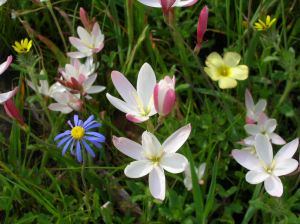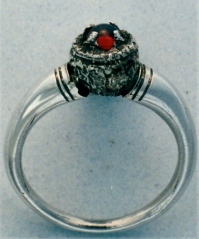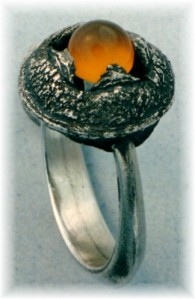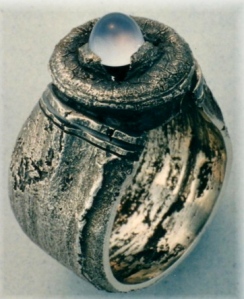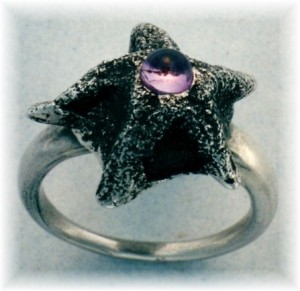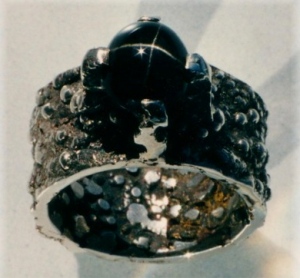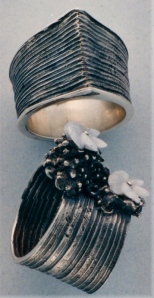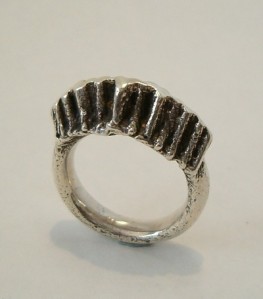Rings with natural elements
The frustrations of using the natural world as a model are obvious: No matter how refined our skill, it is impossible to replicate natural forms in all their detail. They are patterned all the way from the obvious forms that we see down to the exquisite arrangement of their molecules. At best we can refer somewhat simplistically to the patterns we encounter.
The techniques of casting appear to offer a way around this problem. If we can’t fabricate a natural form, perhaps we can cast it? It turns out that, to some extent, we can. To over-simplify, what one does is to encase the thing you’re casting in plaster of Paris and put it in a kiln until the organic material has burned away. Precious metal is then melted and poured into the resulting cavity, and voila! An accurate casting. Of course, it’s not really that simple. Ash residues cause porosities in the product, or prevent the metal from flowing into smaller details. Very fine detail is beyond casting process – you can cast a pod but not a leaf (unless it’s fairly thick.) You can cast a beetle but not its antennae, and the legs will be a problem. Nevertheless, one can get a fairly close approximation of the shape and surface of the original.
The bezels of these pieces are cast from the pods of different species of eucalypt.
Yet another eucalypt, with a bit of the bark cast to form the shank.
I found a pod with a five-fold symmetry. The outside of the pod was furry, which resulted in this rough surface. I cut the tip off the pod, and drilled a setting into it.
This one is cast from bits of dried seaweed, which has a wonderful bumpy texture. The problem is that as soon as the seaweed comes into contact with water (in the plaster of Paris mixture) it swells, writhes and distorts. I solved the problem somewhat by dipping the dried seaweed in beeswax which made it more manageable.
These rings are made from sections of a long flat leaf that I found in the fynbos. The lower one includes a bit of the seaweed and two little flowers made of blue-lace agate.
There’s another kind of casting that takes advantage of natural resources – cuttlefish casting. Here two cuttlefish are ground against each other until they are both flat, and then the envisaged piece and its sprue, the channel through which the metal will flow, is carved in negative (or impressed) into one or both surfaces. Care must be taken to key the two halves (align them correctly) when they are bound together for casting. The technique is quick, and allows for some very pleasing effects.
The cuttlefish has a wonderful texture resembling wood-grain. Here are two rings made in that technique. The top one was made with a particular pod in mind.

